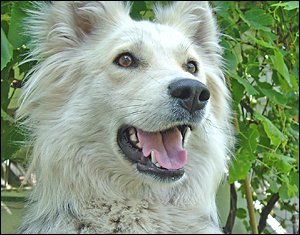 In many homes, pets are considered family. People call their pets their children, but don’t remember one of the most important responsibilities of owning a pet: taking care of their teeth! Just like kids, dogs and cats can develop gum disease, cavities and plaque build up. Dental care for pets is often underestimated but is something that should not be ignored.
In many homes, pets are considered family. People call their pets their children, but don’t remember one of the most important responsibilities of owning a pet: taking care of their teeth! Just like kids, dogs and cats can develop gum disease, cavities and plaque build up. Dental care for pets is often underestimated but is something that should not be ignored.
The first step in taking care of a pet’s teeth is brushing them at home at least three times a week. It is best to begin brushing their teeth at a young age and changing the technique as they get older. When they are young, it is common for it to take a while for them to get used to their teeth being brushed.
To help your pets adjust to having their teeth brushed, begin by wrapping gauze or a washcloth around a finger and using it like a toothbrush on the animal’s teeth. This should be done for one or two weeks so your pet becomes familiar with having its gums and teeth rubbed. When you decide that they are ready to move on, use a tooth brush with plain water for about a week. Then add dog/cat toothpaste to the brush. Remember to never use human toothpaste because it may irritate their stomachs. The most important part of the mouth to brush is the crevice where the gums and teeth meet because this is where odor and infection begins.
Other ways an owner can help with their pet’s teeth health at home is by providing it with unmoistened dry pet food and allowing them to chew on hard biscuits after meals. Dry food and biscuits prevent abrasion which keeps an excess of plaque from forming on the crowns of their teeth.
Home care is never enough to keep a pet’s teeth healthy. Your pets should have regular veterinary dental checkups where they can have their teeth cleaned. When they have their teeth cleaned, they are given a short-lasting anesthetic that allows for the use of gumline probes, removal of tarter and tooth polishing.
Periodontal disease is the most common dental problem in dogs and cats. It is caused by tarter formed by plaque that builds up on the teeth and irritates the gums, causing gingivitis. Gingivitis develops into periodontal disease when the calculus is not removed and builds up under the gums. The gums become separated from the teeth and encourage more bacterial growth.
Signs of periodontal disease include pus around the tooth, persistent bad breath, gums that bleed easily, sensitivity around the mouth, pawing at the mouth, inflamed gums, loose or missing teeth, loss of appetite, upset stomach, drooling, difficulty eating or chewing, and/or irritability or depression. There are a number of treatments veterinarians can use for periodontal disease, but they can be expensive and tedious. Diseases like this can be easily prevented in pets so owners should take all measures to be sure their pets do not develop them.
In summary, to help your pets lead a healthy life, be sure to maintain the health of their teeth. Gum diseases can end up being life threatening if they are not detected early. Prevent them by monitoring your pets’ diet, brushing their teeth several times a week, and bringing them to the veterinarian for regular teeth cleaning.
About the author: Brianna Elliott is a student at the University of Wisconsin-Stout. She is also a regular contributor at ProbioticSmart.com and PSCPets.com – a leading retailer of pet dental health products and supplies including Teddy’s Pride Pet Oral Care which comes highly recommended by veterinarians for pet oral and dental health.